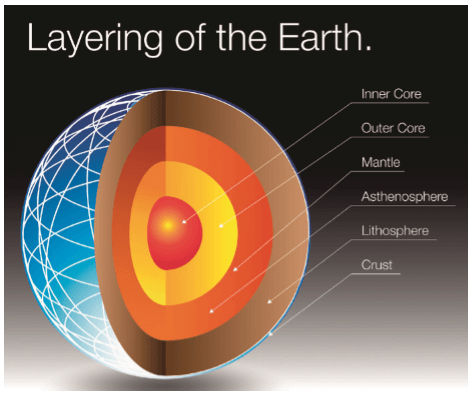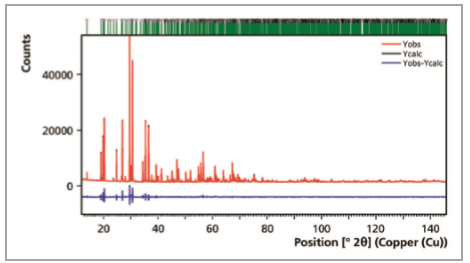The use of the Empyrean diffractometer in combination with the Bragg-BrentanoHD optical module enables us to pin down the real crystal structure of one important member of a mineral family.
Pyroxenes form a large family of materials which have been investigated for decades due to their importance in mineralogy. Olivines and pyroxenes form the vast majority of the earth’s mantle. Consequently, the temperature, pressure and chemical composition effects on the crystal structure of these materials continue to be the subject of intensive research.
Pyroxenes form a large family of materials which have been investigated for decades due to their importance in mineralogy [1]. Olivines and pyroxenes form the vast majority of the earth’s mantle. Consequently, the temperature, pressure and chemical composition effects on the crystal structure of these materials continue to be the subject of intensive research. Pyroxenes have attracted further interest from the physics community because of their reported interesting dielectric and magnetic properties. It has been shown that the dielectric properties of these materials can be controlled by a magnetic field and vice-versa [2]. The ability to tune these properties conversely is called multiferroicity. Such a property is of interest for potential technological applications.
Here we briefly present the results and discussion of a detailed investigation of the crystal structure of one of these multiferroic materials: LiCrGe2O6.
Powder diffraction data were acquired, at room temperature, using the Empyrean XRD platform configured with a Bragg-BrentanoHD optical module, a transmission- reflection spinner, fixed anti-scatter slits on the diffracted beam path in combination with the PIXcel3D used as a line detector. The LiCrGe2O6 powder sample was prepared by mixing stoichiometric quantities of Li2CO3, Cr2O3 and GeO2. The starting materials were heated to 1000°C several times with grinding between each heating run.
Figure 1. The internal structure of the Earth where the mantle is mostly made of olivine and pyroxene minerals

A proper understanding of the physical and chemical properties of pyroxenes relies on the proper determination of their crystal structure. For LiCrGe2O6, there are contradictory results published in the literature giving rise to some doubts about the correct structural properties of this material. A first, single crystal, investigation reported the symmetry P21/c for this material [3]. 2 years later, a new investigation reporting high-resolution powder synchrotron data claimed that the symmetry was C2/c with similar cell parameters [4]. Consequently, we have reinvestigated the crystal structure of LiCrGe2O6. We paid particular attention to potential weak reflections breaking the C2/c symmetry (reflections hk0 with h+k = 2n+1). We could observe a weak (210) reflection as shown in Figure 2 which is only 0.3% of the most intense reflection. The presence of this reflection agrees with the P21/c symmetry as determined from single crystal work and thus challenges the powder synchrotron results.
Table 1. Atomic coordinates of LiCrGe2O6 obtained from the Rietveld refinement shown in Figure 3
Figure 2. Zoom into the area of the diffraction pattern showing the existence of the (210) reflection. The integrated intensity of this reflection is 0.3%of the most intense reflection demonstrating the powerfulness of the Bragg-BrentanoHD optical module to probe the existence of weak reflections.
Figure 3. Rietveld refinement at room temperature of LiCrGe2O6 exhibiting the monoclinic symmetry P21/c with cell parameters. Rietveld refinement was carried out with HighScore Plus 4.1 [5].

Bragg-BrentanoHD takes laboratory powder diffraction to a new level. The combination of high flux and high resolution provides data quality that can challenge synchrotron powder diffractometers and can provide insightful data, where it matters. Here we demonstrate how this has enabled us to pin down the true symmetry of the pyroxene LiCrGe2O6.